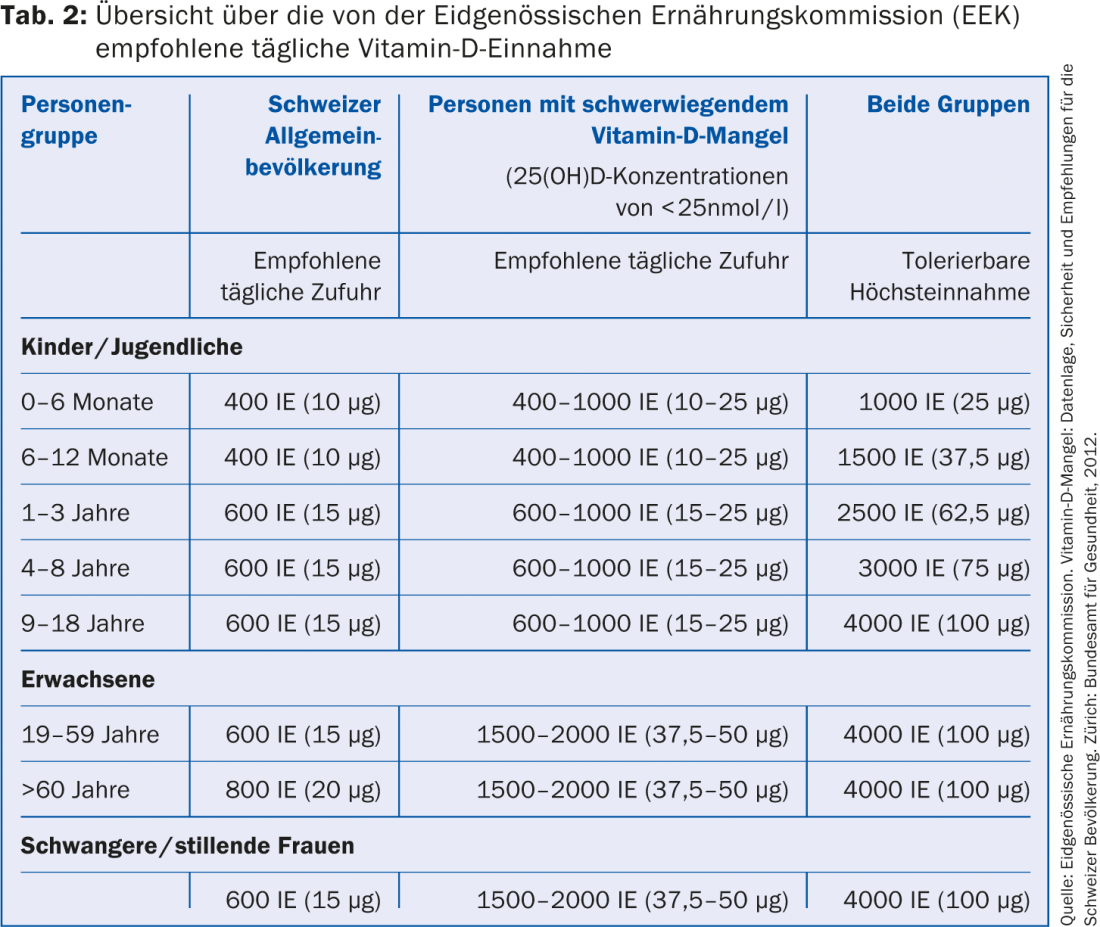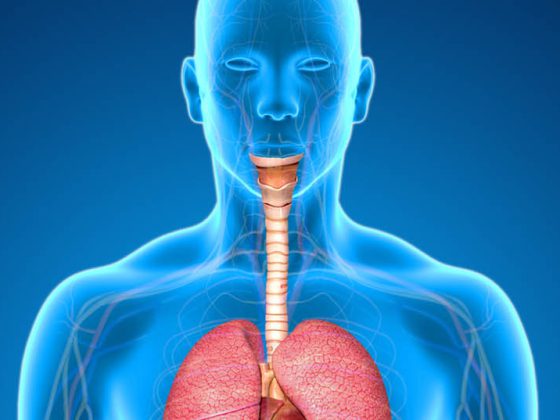The important function of sunlight on bone formation was discovered early, but the knowledge about vitamin D formed only in the last century. Today, the data are clear and it is established that serum concentrations that are too low can have negative effects.
The vitamin D in our body comes from two different sources: It can either be built up through the skin (endogenous, vitamin D3) or supplied through food (exogenous). The UV-A and UV-B rays reach the earth’s surface, but only the UV-B rays trigger vitamin D formation in the skin. This process depends on skin type, age, duration of sun exposure and use of sunscreens. The body’s own vitamin D synthesis usually exceeds vitamin D intake from food. Vitamin D supplied through the diet comes primarily from animal products. Important sources are fatty fish (herring, salmon, sardines), eggs and dairy products (Tab. 1). Vitamin D promotes calcium and phosphate absorption in the intestine and their incorporation into the bones, regulates calcium and phosphate metabolism with other hormones and is important for healthy bone and tooth formation.

Vitamin D deficiency promotes osteoporosis, general fatigue, muscle weakness, and diffuse bone and muscle pain. Risk groups include infants and children, pregnant and breastfeeding women, the elderly, the chronically ill, the obese, and people with dark skin types. Massive vitamin D deficiency can result in rickets in young children and osteomalacia in adults.
Excessive intake of high-dose supplements over a long period of time can lead to overdose, but not through diet or sun exposure. As a result, hypercalcemia occurs.
Situation in Switzerland
It must be assumed that about 50% of the Swiss population have a 25(OH)D concentration of less than 50 nmol/l. However, current data suggest that a 25(OH)D level of at least 50 nmol/l is needed to support bone health in all adults and muscle health in the elderly. Health benefits of serum concentrations above 50 nmol/l have only been confirmed for these two ranges. Evidence for the positive influence of other diseases resp. whose prevention by serum concentrations above 50 nmol/l is absent.
For older persons over 60 years of age, vitamin D administration of 800 IU per day is strongly recommended. This recommendation is based on randomized controlled trials that have shown a 20% reduction in falls and fractures. Table 2 summarizes the recommendations of the EEK.
For detailed information, see the EEK report on vitamin D www.blv.admin.ch/eek.

HAUSARZT PRAXIS 2014; 9(12): 9











